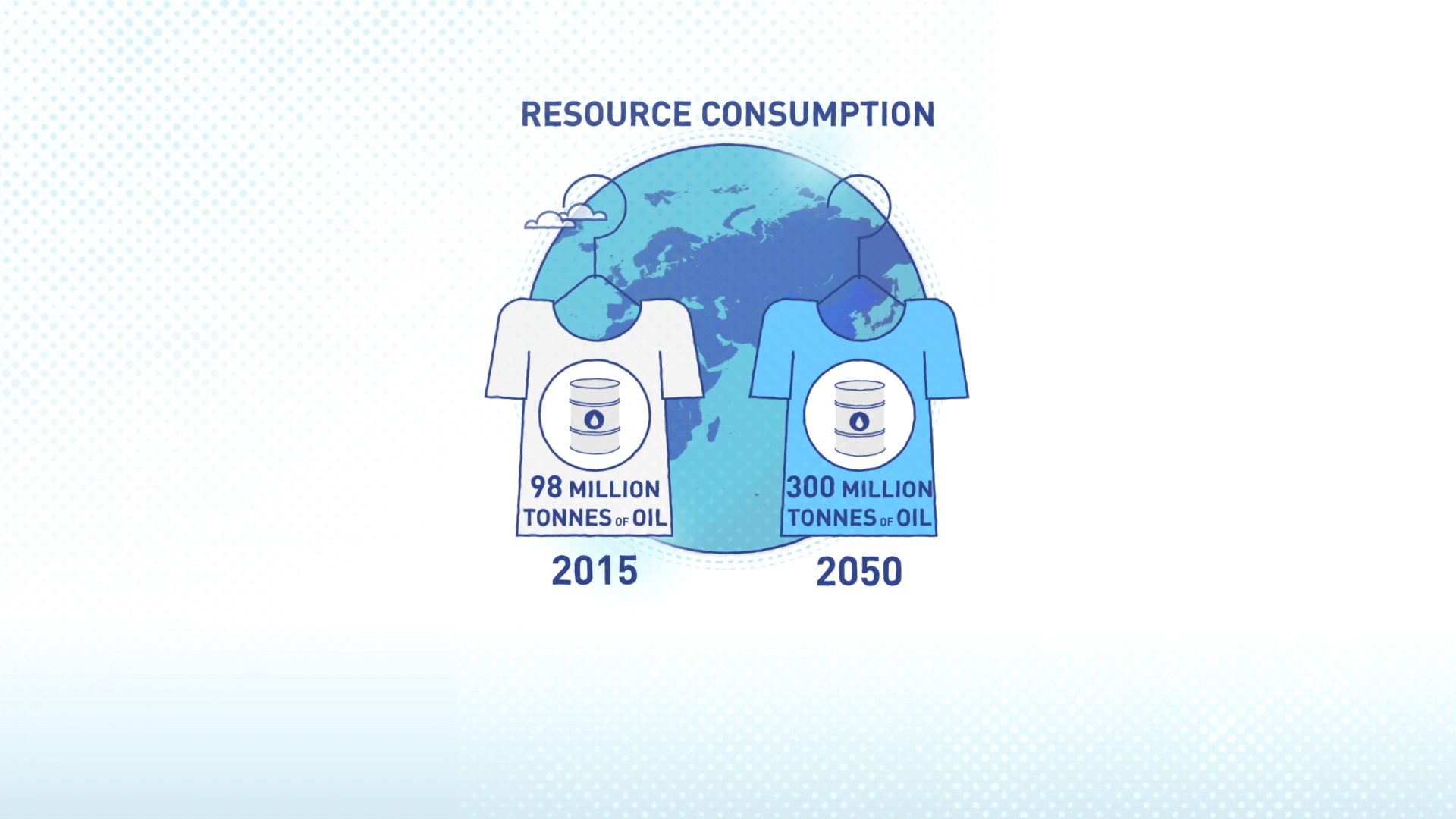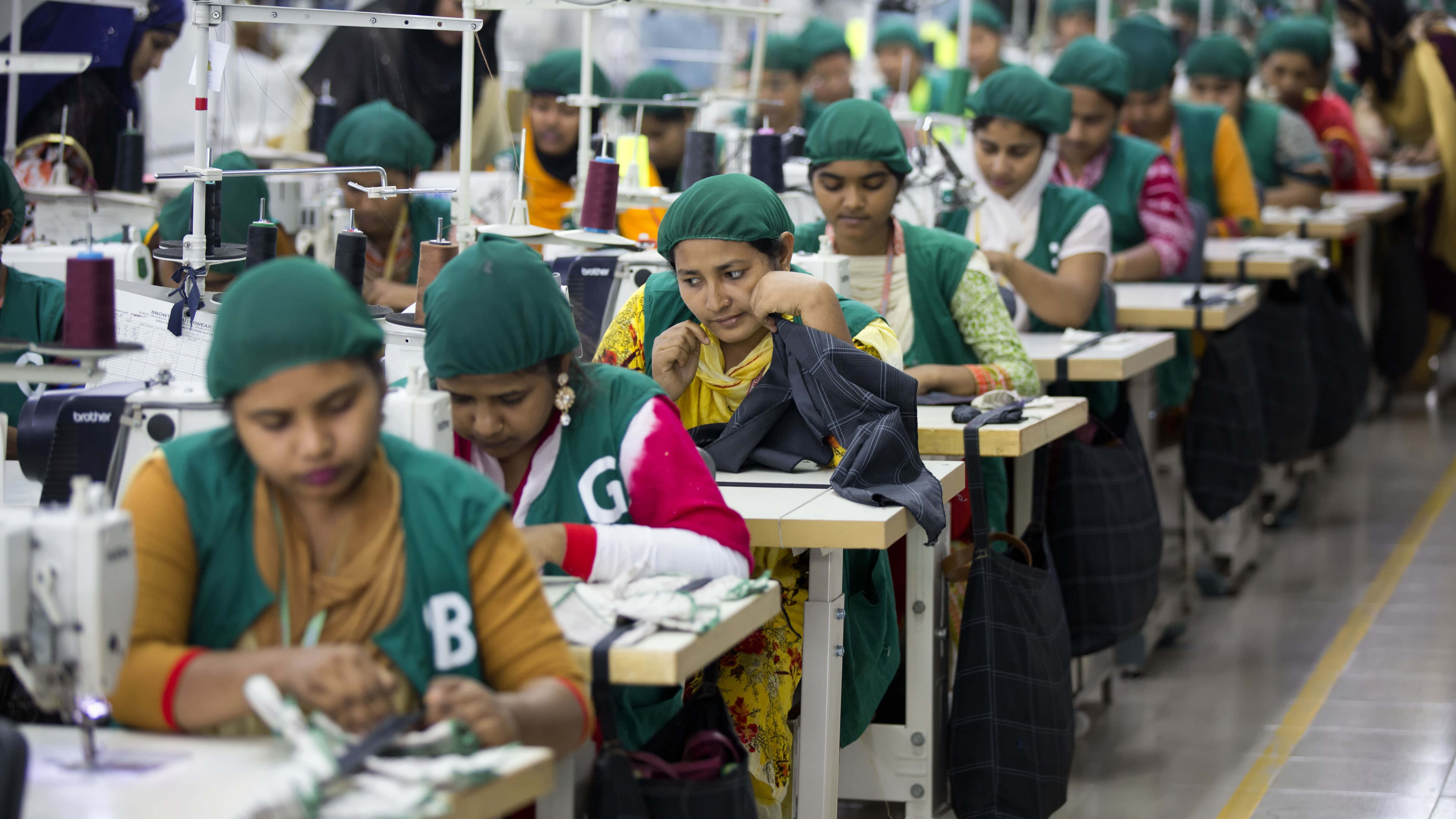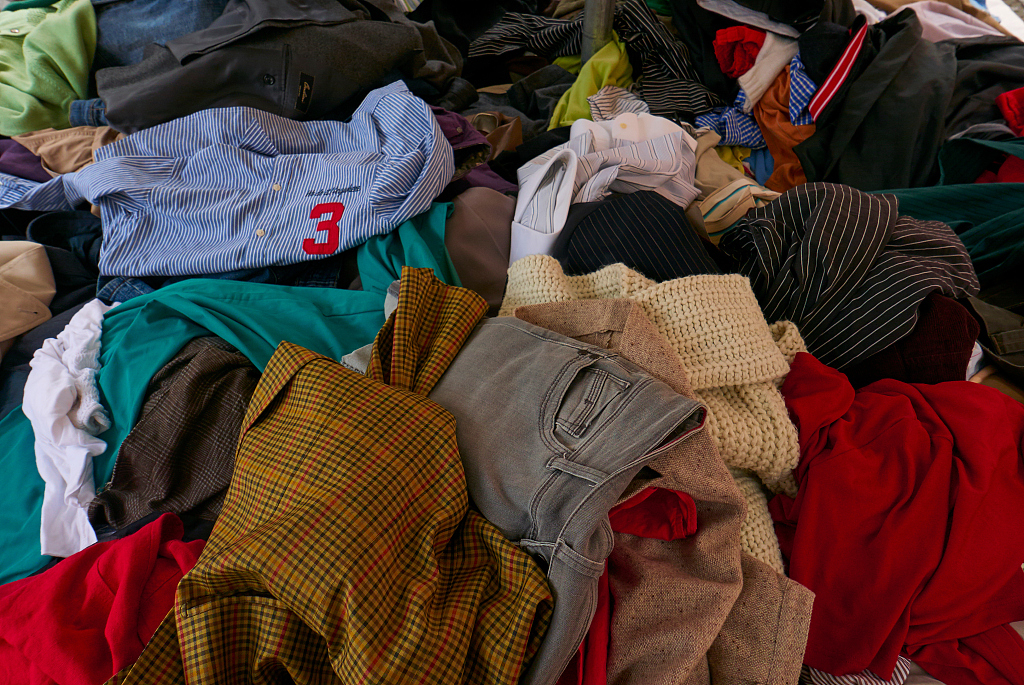03:31

It is no secret that the garment industry uses low paid workers and negatively impacts the environment. However, It's less well known that the fashion industry is the world's second largest water polluter after the oil industry and is responsible for 20 percent of the world's industrial water pollution, according to the Ellen Macarthur Foundation.
Despite a growing awareness of the environmental and social costs and much discussion within the fashion industry itself, there has been little progress over the past decade in the way the industry sources and manufactures clothes.
If the current trend continues, it's very possible that the garment industry could seriously damage the environment by 2050.
The environmental cost of fashion
In 2015, the textile industry's carbon footprint accounted for 2 percent of the world's carbon budget. The carbon budget was set at the 2015 Paris Agreement on climate change to limit the amount of CO2 created by production in an attempt to prevent global temperatures from rising by two degrees by 2050. Unless there are significant changes, the textile industry is on track to increase its share of the allocated carbon budget to 26 percent by this time.
Many modern fabrics like polyester, nylon, acrylic and polyamide can contain large amounts of plastic. Oil is needed to produce these plastics and the amount of oil in garment production is expected to more than triple in this period, from 98 million tons of oil used in 2015 to 300 million tons in 2050.
Additionally, with each wash, these fabrics can release thousands of microplastics. In 2017, an estimated half a million tons were released. By 2050, this could rise to 22 million tons. These microplastics cause damage to the environment and many make their way back to humans through the food chain.
Read More: How your clothes become microfiber pollution in the sea
00:07

The water that makes our clothes
The fashion industry uses large amounts of water in the process of turning 53 million tons of materials into clothes. On average, that amounts to 79 billion cubic meters of water every year.
That amount of water could fill 32 million Olympic-size swimming pools, according to Global Fashion Agenda. By 2030, this number is projected to increase by around 50 percent.
A single cotton shirt uses around 2,700 liters of water in the production process. This is the amount of water a single person needs to drink in two and a half years.

Around 55 percent of garment workers in Bangladesh regularly work more than three hours of overtime. (Credit: AP/A.M. Ahad)
Around 55 percent of garment workers in Bangladesh regularly work more than three hours of overtime. (Credit: AP/A.M. Ahad)
The workers who make our clothes
In February 2020, as competition and globalization has driven costs down, you can easily buy dresses and shirts for $5 and T-shirts for as little as $2. That makes clothes on the high street on par with the cost of a cup of coffee.
However, keeping costs down regularly means low-cost labor. In Vietnam, 70 percent of garment workers cannot afford enough food to feed their families and 53 percent cannot afford medical treatment in case of an emergency, according to a study by Oxfam Australia.
In Bangladesh, 90 percent are unable to buy enough food to feed their families and 72 percent cannot afford medical treatment.
The environmental costs of the garment industry, such as the polluted water and chemicals from dyes, are also felt first by these workers. Much of the cotton for clothes is grown in countries with some level of water stress, meaning that soon these countries will have to decide between clean water for clothes or for drinking.

The vast majority of clothes, around 73 percent, end up in a landfill or are
incinerated at the end of its life. (Credit: VCG)
The vast majority of clothes, around 73 percent, end up in a landfill or are
incinerated at the end of its life. (Credit: VCG)
Fast fashion is popular because of its low price tag, making large amounts of clothes accessible to a greater number of people. However, Aja Barber, a sustainable fashion influencer and writer, told CGTN Europe that there are many things that people on a budget can do if they want to cut back on the carbon footprint of their clothes.
"If someone is on a small budget, the first thing that I say is go for the second-hand market," she said. "Because you can get some amazing things. We are making so much clothing that there are tones to pick from.
"Go to swap parties. Swap with your friends. There are all types of cool swaps going on…where you can go and get different clothing."
She added that if consumers want to buy new clothes, they should look to buy more sustainable products, pointing out that many such brands have similar price points as more expensive fast fashion.